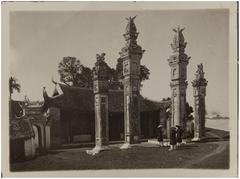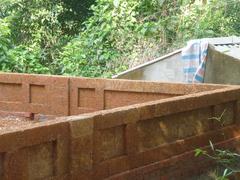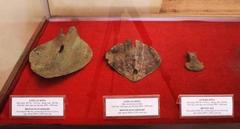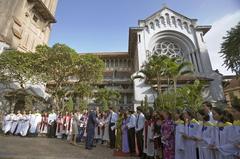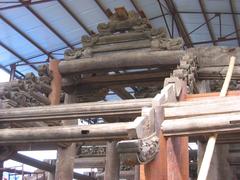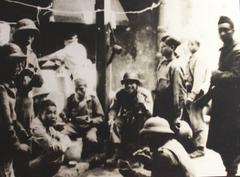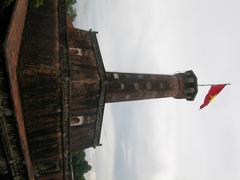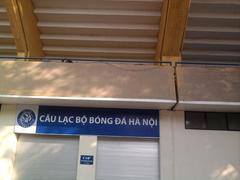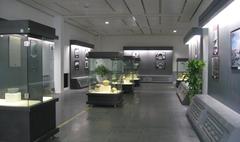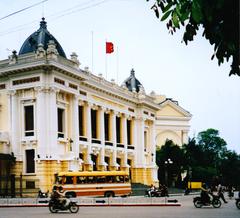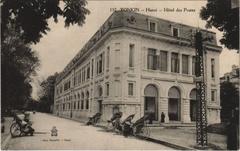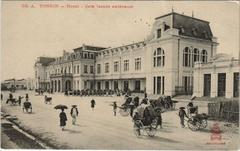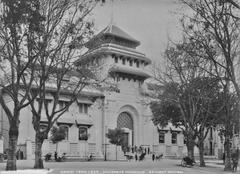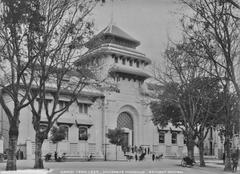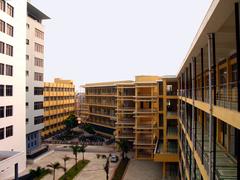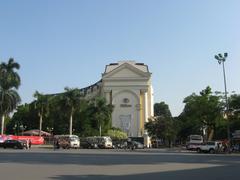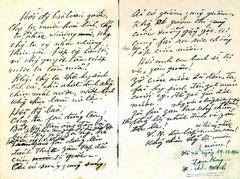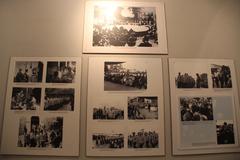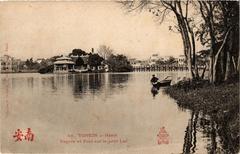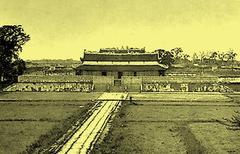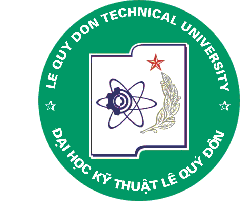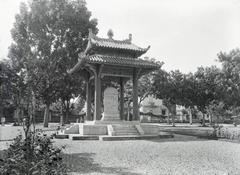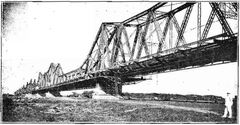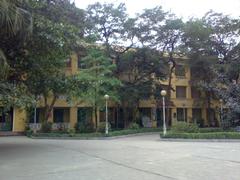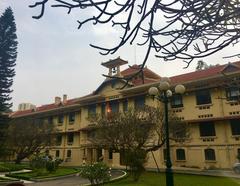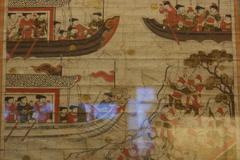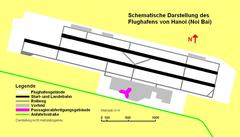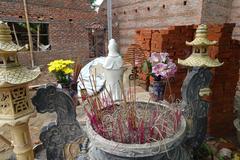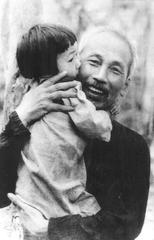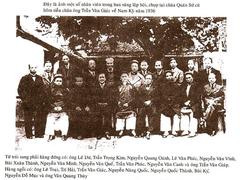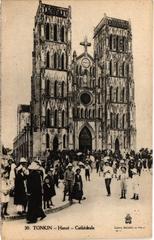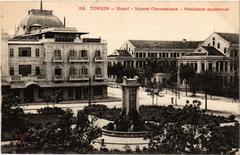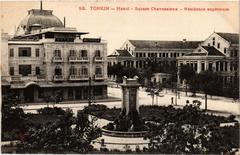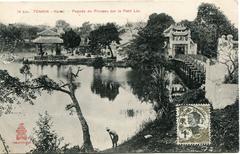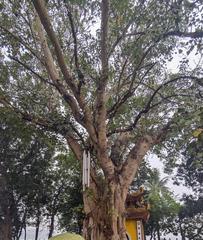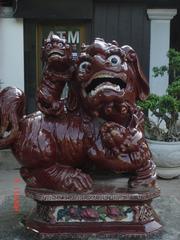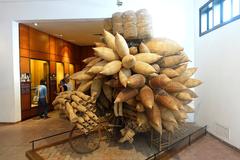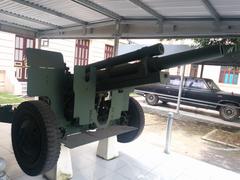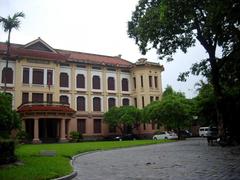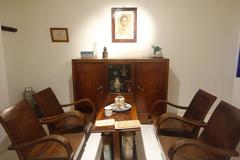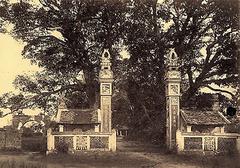Visiting 312 Lạc Long Quân - Chùa Thiên Niên Guide
Date: 31/07/2024
Introduction
Chùa Thiên Niên, also known as Chùa Trích Sài, is a historic Buddhist temple located at 312 Lạc Long Quân, Hanoi, Vietnam. This temple is one of the oldest religious sites in the region, with its origins dating back to the early 18th century (VinWonders). The temple holds immense historical, cultural, and architectural significance, making it a must-visit site for history enthusiasts, spiritual seekers, and tourists alike. In this comprehensive guide, we will delve into the rich history of Chùa Thiên Niên, explore its architectural beauty, and provide practical visitor information and travel tips. Whether you are interested in the temple’s historical events, cultural festivals, or simply seeking a serene place for reflection, Chùa Thiên Niên offers a unique and enriching experience (TayHo360, Wikipedia).
Table of Contents
- Introduction
- History of Chùa Thiên Niên (Chùa Sài)
- Visitor Information
- Restoration and Preservation
- Cultural and Religious Role
- Modern-Day Relevance
- Frequently Asked Questions (FAQ)
- Conclusion
History of Chùa Thiên Niên (Chùa Sài)
Origins and Early History
Chùa Thiên Niên was constructed during the reign of the Lê dynasty, a period marked by significant cultural and architectural development in Vietnam. Initially built to serve as a place of worship for both Buddhists and followers of the indigenous Mother Goddess religion, the temple reflects the syncretic nature of Vietnamese spirituality.
Architectural Evolution
The architectural style of Chùa Thiên Niên is a testament to the craftsmanship and aesthetic sensibilities of the early 18th century. The temple complex includes several key structures such as the Tam Quan (three-entrance gate), the main hall (Tam Bảo), the ancestral house (Nhà Tổ), and various auxiliary buildings. The Tam Quan is particularly notable for its intricate carvings and symbolic representations, characteristic of the period’s architectural style.
The main hall, or Tam Bảo, is the heart of the temple, housing statues of the Buddha and other deities. The hall’s design is both functional and symbolic, with its layout intended to facilitate the flow of spiritual energy. The ancestral house, or Nhà Tổ, serves as a place to honor the temple’s founders and benefactors, further emphasizing the importance of lineage and tradition in Vietnamese culture.
Historical Significance
Chùa Thiên Niên holds significant historical value, not only as a religious site but also as a cultural landmark. It has been recognized as a National Cultural Heritage site by the Vietnamese government, underscoring its importance in the nation’s history. The temple has witnessed numerous historical events and has been a center for community activities, religious ceremonies, and cultural festivals.
One of the most notable historical events associated with Chùa Thiên Niên is the annual commemoration of Phạm Thị Ngọc Đô, the second consort of King Lê Thánh Tông. This event, held on the fifth day of the first lunar month, attracts numerous visitors and highlights the temple’s role in preserving local traditions and history.
Visitor Information
Chùa Thiên Niên Visiting Hours
Chùa Thiên Niên is open daily from 6:00 AM to 6:00 PM. It is advisable to visit during the early morning or late afternoon to avoid the peak hours and enjoy a more serene experience.
Chùa Thiên Niên Tickets
Entry to Chùa Thiên Niên is free. However, donations are welcome and contribute to the maintenance and preservation of the temple.
Travel Tips
- Best Time to Visit: Spring (February to April) and autumn (September to November) are the best times to visit, as the weather is mild and pleasant.
- Dress Code: Modest attire is recommended. Visitors should avoid wearing shorts or revealing clothing out of respect for the religious site.
- Nearby Attractions: After visiting Chùa Thiên Niên, consider exploring nearby attractions such as Hồ Tây (West Lake), Trấn Quốc Pagoda, and the Vietnam Museum of Ethnology.
- Guided Tours: For a more in-depth understanding of the temple’s history and significance, consider joining a guided tour.
- Photography: The temple offers numerous photographic spots. Be respectful and avoid disrupting worshippers when taking photos.
Restoration and Preservation
Over the centuries, Chùa Thiên Niên has undergone several restorations to preserve its structural integrity and aesthetic beauty. These efforts have been crucial in maintaining the temple’s historical and cultural significance. The most recent restoration took place in the early 21st century, focusing on repairing the main hall, the Tam Quan, and other key structures.
The restoration process involved meticulous attention to detail, ensuring that the original architectural elements were preserved. Traditional materials and techniques were used to maintain the temple’s authenticity, reflecting a deep respect for the craftsmanship of the original builders. These efforts have not only preserved the temple’s physical structure but also its spiritual and cultural essence.
Cultural and Religious Role
Chùa Thiên Niên continues to play a vital role in the religious and cultural life of the local community. It serves as a place of worship for Buddhists and followers of the Mother Goddess religion, offering a space for meditation, prayer, and spiritual reflection. The temple also hosts various cultural events and festivals, which attract visitors from across the region.
One of the most significant cultural events held at Chùa Thiên Niên is the annual Tết Nguyên Đán (Lunar New Year) celebration. During this time, the temple becomes a hub of activity, with visitors coming to offer prayers, make offerings, and participate in traditional ceremonies. The celebration is a vibrant display of Vietnamese culture and spirituality, reflecting the temple’s enduring significance in the community.
Modern-Day Relevance
In contemporary times, Chùa Thiên Niên remains a popular destination for both locals and tourists. Its historical and architectural significance, combined with its serene and spiritual atmosphere, makes it a unique and compelling site to visit. The temple’s location near Hồ Tây (West Lake) adds to its appeal, offering visitors a picturesque setting to explore and enjoy.
The temple’s ongoing relevance is also reflected in its role as a center for cultural preservation and education. Various programs and initiatives are organized to promote understanding and appreciation of Vietnamese history, culture, and spirituality. These efforts ensure that Chùa Thiên Niên remains a living monument, continuing to inspire and educate future generations.
Frequently Asked Questions (FAQ)
Q: What are Chùa Thiên Niên’s visiting hours?
A: The temple is open daily from 6:00 AM to 6:00 PM.
Q: Do I need to buy tickets to visit Chùa Thiên Niên?
A: Entry to the temple is free, but donations are appreciated.
Q: What is the best time to visit Chùa Thiên Niên?
A: The best time to visit is during spring and autumn for mild and pleasant weather.
Q: Are there guided tours available?
A: Yes, guided tours are available and provide an in-depth understanding of the temple’s history and significance.
Q: What should I wear when visiting Chùa Thiên Niên?
A: Modest attire is recommended. Avoid wearing shorts or revealing clothing.
Conclusion
Chùa Thiên Niên (Chùa Sài) at 312 Lạc Long Quân is a remarkable testament to Vietnam’s rich cultural and religious heritage. Its historical significance, architectural beauty, and enduring role in the community make it a must-visit destination for anyone interested in exploring the spiritual and cultural landscape of Hanoi. The temple’s preservation and ongoing relevance highlight the importance of maintaining and celebrating historical sites, ensuring that they continue to inspire and educate for generations to come.
For more detailed information, you can visit the VinWonders article.
Don’t forget to download the Audiala mobile app for more updates and follow us on social media for the latest news and travel tips!
References
- VinWonders. (n.d.). Chiêm bái 14 ngôi đền chùa ở Hồ Tây. vinwonders.com
- TayHo360. (n.d.). Chi tiết di tích lịch sử Chùa Thiên Niên. tayho360.vn
- Wikipedia. (n.d.). Chùa Thiên Niên. vi.wikipedia.org


